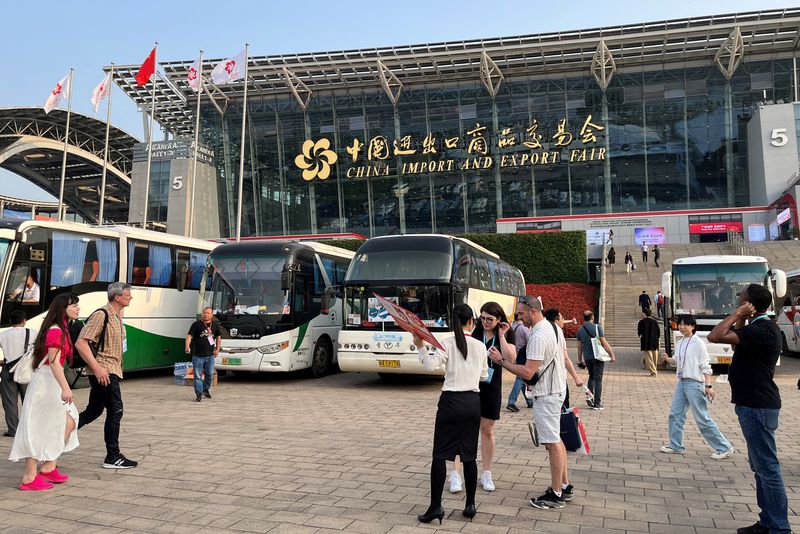By Ellen Zhang and David Kirton
BEIJING (Reuters) – Foreign buyers will flock to the vast halls of China’s biggest trade fair from Monday, seeking deals on Chinese goods that the U.S. and European governments complain are flooding global markets.
The 135th Canton Fair comes as China is making a strategic policy shift, speeding up the distribution of resources toward its manufacturing complex and away from the crisis-hit real estate sector in hopes it can move up the value ladder.
That’s causing alarm in Washington and Brussels, especially for what China calls the “new three” industries of electric vehicles, batteries and solar power, where the world’s second-largest economy is becoming a dominant export power.
US and EU officials fear that their own industries will not be able to compete with China’s vast industrial capacity, which will push down prices.
But deep and prolonged factory deflation has also become a concern domestically, as many manufacturers – especially at the lower tech end – are locked in a price war, competing for stiff and tepid global demand.
“For this year’s fair, the key word will be ‘low price’, whether it is low-tech or high-tech products from China,” said Zhiwu Chen, professor of finance at HKU Business School.
“Because domestic demand for goods in China is much lower than usual and overcapacity is high in most sectors, manufacturers must reduce prices to achieve more exports.”
Around 93,000 foreign buyers are expected to attend the three-week fair, perusing products from 28,600 exhibitors selling everything from massage chairs to frying pans to garden ornaments at stands covering 1.5 million meters of space squares – or 280 football fields.
Organizers said the fair will showcase China’s efforts to move up the value chain in line with President Xi Jinping’s push for “new productive forces” in the economy.
Despite all the hype around China’s rise in the green energy sector, exports from the “new three” accounted for just 4.5% of total shipments last year. Most factories are less sophisticated, and depressed domestic demand leaves them at the whims of foreign buyers.
Kris Lin, a regular exhibitor at the Canton Fair who owns a lighting product factory in the eastern province of Zhejiang, spent tens of thousands of yuan to rent a booth this year, but is not traveling with high expectations.
“In recent years, fewer and fewer buyers from Europe and the United States come to check our products,” Lin said.
“A big buyer from a Western supermarket would send five to eight people, dressed in nice clothes. I’ve only seen one or two in the last few years and they were looking around.”
Deals worth about $22.3 billion were signed at the last Canton Fair in October, up 2.8% from the April 2023 fair, the first after three years of disruptions due to the pandemic. This is still well below pre-COVID returns of around $30 billion.
Given the deflation of producer prices in China, the lower numbers may reflect a decline in value rather than volume. On Friday, further evidence of exporters’ woes was highlighted by disappointing Chinese March exports and imports, which both contracted.

“Foreign purchasing managers who come to the fair will find many prices too low to resist and will sign many fire-sale-like deals,” Chen said.
“This year’s fair will showcase the contradiction between the preferences of governments in developed countries and the priorities of businesses at the micro level.”